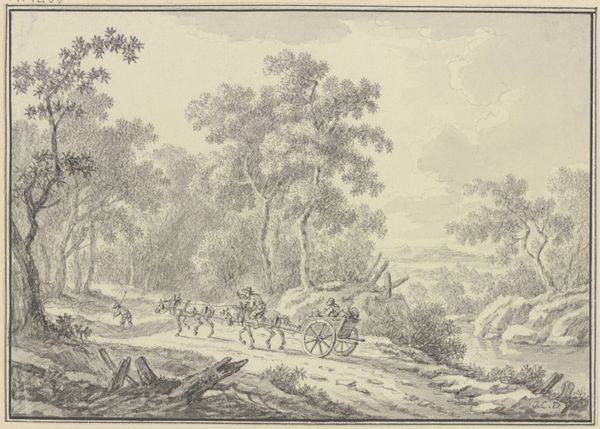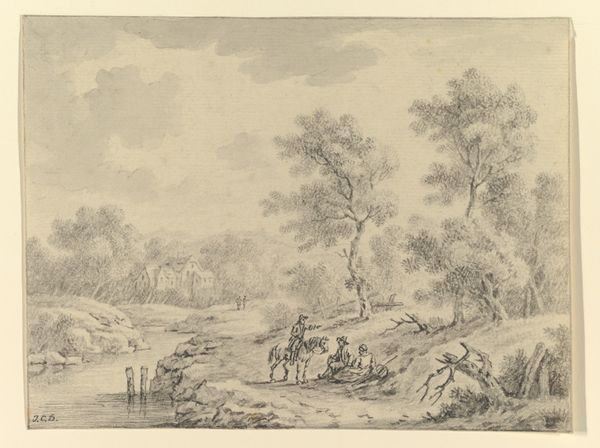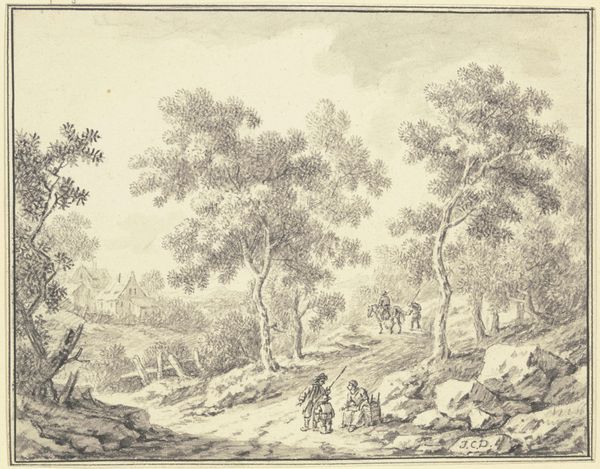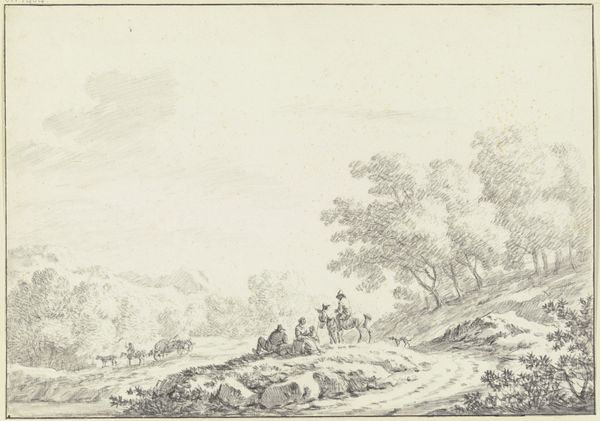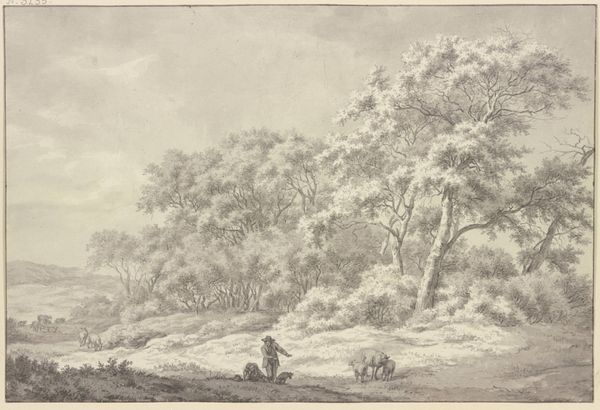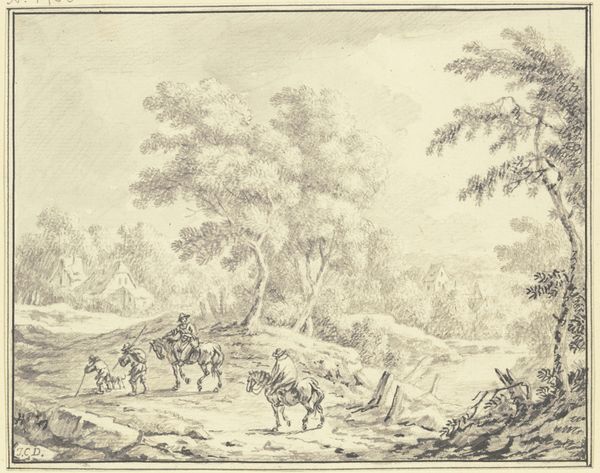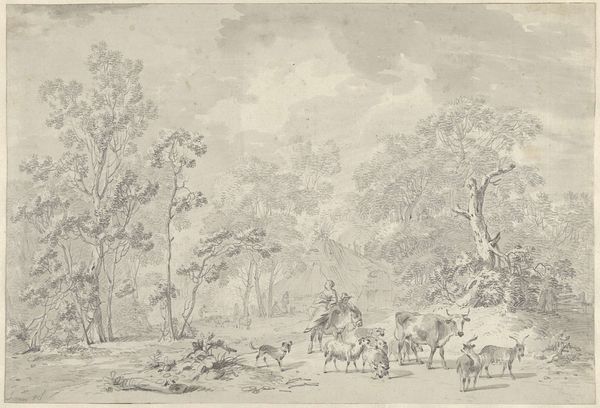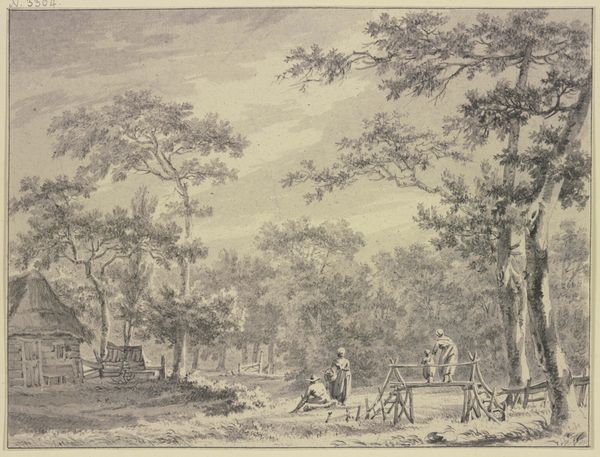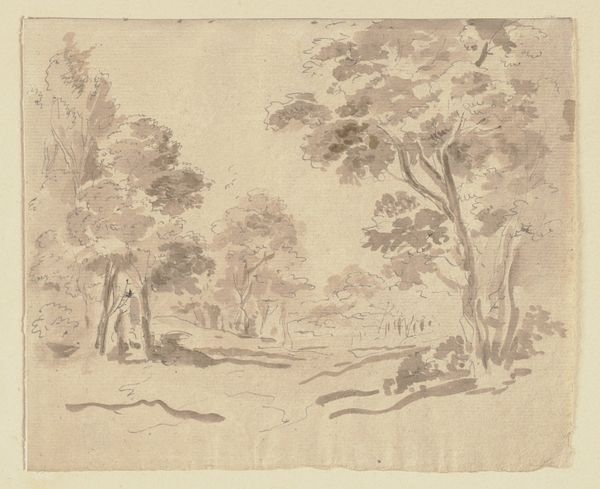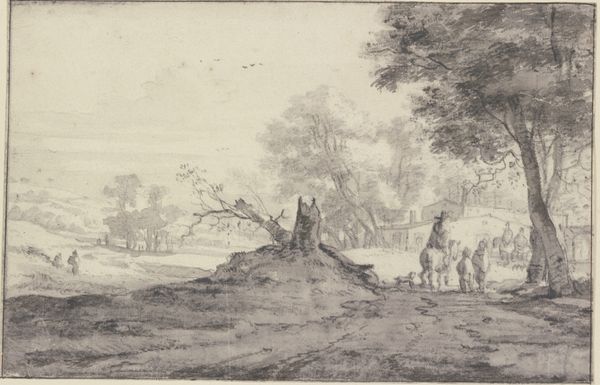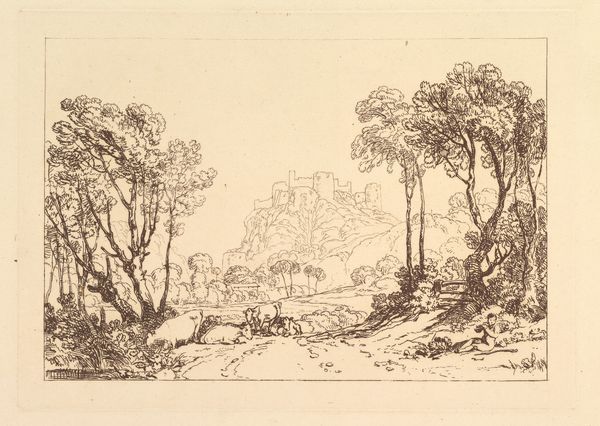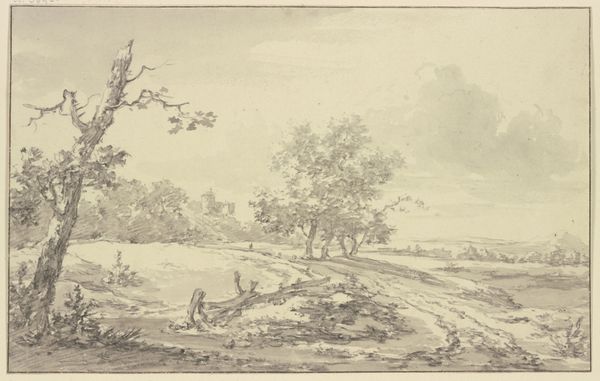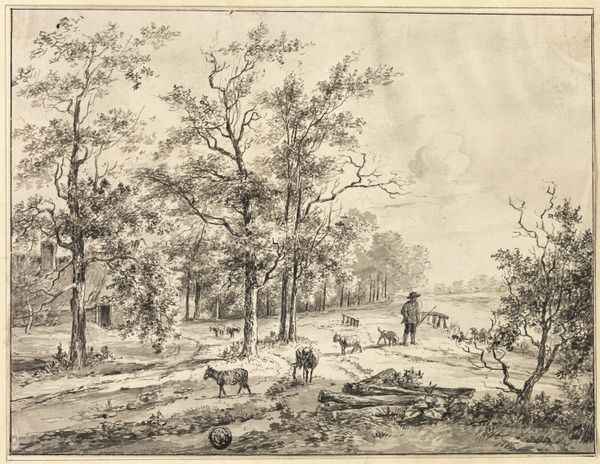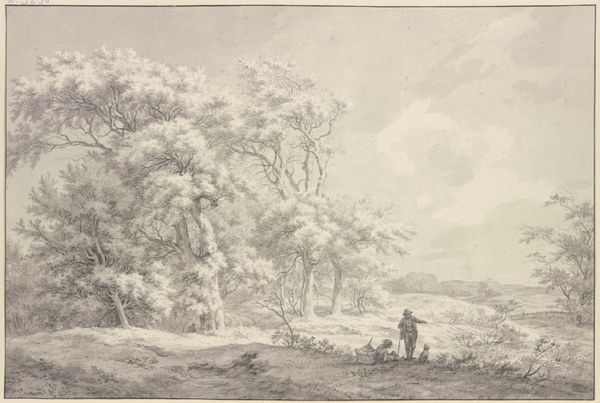
Waldlichtung mit Durchblick auf Häuser und ein Kirchlein, auf dem Weg vorne eine sitzende Frau mit einem Knaben und ein zweirädriger Karren mit zwei hintereinander gespannten Pferden
0:00
0:00
drawing, ink, chalk
#
drawing
#
baroque
#
landscape
#
ink
#
chalk
#
15_18th-century
Copyright: Public Domain
Curator: Let’s discuss this fascinating landscape scene, attributed to Johann Christoph Dietzsch: "Wood Clearing with a View of Houses and a Small Church, on the Path in Front a Seated Woman with a Boy and a Two-Wheeled Cart with Two Horses Harnessed One Behind the Other." Editor: It strikes me immediately as being melancholic, almost bleak. The monochrome palette emphasizes the harshness of rural life, that’s amplified through the angular skeletal trees against that wispy overcast sky. Curator: Notice how Dietzsch employs a range of techniques, combining ink and chalk, to create depth and texture. The meticulous detailing of the foliage and figures adds to the overall visual complexity. Look specifically at how line variation suggests distance through delicate shifts in tonal weight. Editor: Yes, but look at who is depicted: a woman seemingly resting, a young boy… I think the setting, far from idyllic, speaks volumes about labour and precariousness. How does gender intersect with economic hardship in this supposedly 'charming' landscape? And shouldn’t we acknowledge the ecological impact—this clearing and the two-wheeled cart are a reminder that resources have been taken? Curator: From a purely formal perspective, the composition’s division into thirds, with the forest in the foreground giving way to the village in the distance, draws our eye through an elaborate sequence from nature toward community. Editor: Community structured upon an unspoken, socially and sexually defined workload; nature exploited and then conveniently prettified by someone with enough safety to sketch this experience and make some money? I find it all but visually appealing. Curator: I perceive an effort by the artist to capture not just the visual aspects, but the atmosphere of a locale. His technical approach contributes greatly to the depth and complexity of his subject matter, especially through composition, creating a very fine drawing from the period. Editor: And perhaps our differing interpretations speak to why these images stay interesting and prompt us to dig deeper—past conventional composition and into questions around class, gender, access and societal impact. Curator: Precisely, there are no objective ways to receive this rendering of rural society—it only generates ever shifting impressions shaped by cultural discourse and personal expectations.
Comments
No comments
Be the first to comment and join the conversation on the ultimate creative platform.
